Comments / Questions (35)
![]() Ulla Wåhlström Ahotupa wrote:
Ulla Wåhlström Ahotupa wrote:
Vid mönster A1 så har jag 208 maskor. När mönstret är klart har jag inte minskat till 182 utan jag har kvar 208 maskor. Vad gör jag för fel. Hur kan jag göra omslag på varje sida av mönsterdelen och samtidigt minska 26 maskor? Hur ska jag göra?
25.01.2025 - 16:01DROPS Design answered:
Hei Ulla. I str. M. Hver rapport av av A.1 består av 16 masker (16 masker x 13 rapporter = 208 masker), men når du strikker nest siste omgang av A.1 og strikker det sorte trekant ikonet feller du 2 masker pr gang du strikker A.1. Da består A.1 av kun 14 masker (14 masker x 13 rapporter = 182 masker). mvh DROPS Design
27.01.2025 - 10:54
![]() Cécile SEGURON wrote:
Cécile SEGURON wrote:
Comment je fais pour supprimer les 2 mailles au dernier rang de A1 ? Merci par avance pour votre réponse. Cécile
07.11.2024 - 14:21DROPS Design answered:
Bonjour Cécile, au 14ème tour de A.1, on va diminuer 2 mailles (= on glisse 1 m à l'end, on tricote les 2 m suivantes ensemble à l'endroit et on passe la maille glissée par-dessus les 2 mailles tricotées ensemble) = on diminue 2 mailles - cette fois, les diminutions ne sont pas compensées par 1 jeté comme elles l'étaient jusque là. Bon tricot!
07.11.2024 - 16:37
![]() Louise Titterton wrote:
Louise Titterton wrote:
Please disregard question from me. I have misread the pattern and have it sorted now. Thanks
13.09.2024 - 06:31
![]() Louise Titterton wrote:
Louise Titterton wrote:
I am knitting size small and there seems to be an error. After joining body and sleeves, you decrease every second row, at each marker, 20 times to go from 270 stitches to 102. To achieve that number of stitches you have to do the decreases 22 times. Is there an error in the pattern? Thanks
13.09.2024 - 03:57DROPS Design answered:
Hi Louise, 20 x 8 = 160 stitches decreased, so you should have 110 stitches left on the round after the decreases. Happy knitting!
13.09.2024 - 06:32
![]() Christina Lohmeier wrote:
Christina Lohmeier wrote:
Hallo, ich finde die Musteranleitungen A1 und A2 nicht. Wo finde ich sie? LG
28.09.2021 - 13:15DROPS Design answered:
Liebe Frau Lohmeier, die finden Sie zwischen die schriftliche Anleitung und die Skizze - wir hatten im Wochenende Probleme beim Anzeigen von Bildern, aber dieses ist jetzt gelöst. Wenn Sie immer noch nicht die Bilder sehen können, versuchen Sie die Seite zu aktualisieren und/oder Ihren Cache zu leeren. Viel Spaß beim stricken!
28.09.2021 - 16:04
![]() Anja wrote:
Anja wrote:
Bij de mouwen staat wordt in de rondte gebreid op breinasld zonder knop… neem aan dat het dan om 4 breinaalden gaat. Moet ik de opzetsteken al gelijk verdelen over de 3 nld? Kan het evt ook gewoon op een rondbreinaald?
10.07.2021 - 12:27DROPS Design answered:
Dag Anja,
Ja, je verdeeld de opgezette steken over 3 naalden en je breit met de 4e naald, maar je kan het inderdaad ook met een rondbreinaald doen, maar niet wat je het handigst vindt.
13.07.2021 - 19:34
![]() Marianne Klüglein wrote:
Marianne Klüglein wrote:
Spørgsmål, sød bluse, men kan ikke forstå, at jeg, efter at jeg har slået 208 m op og strikket det første mønster skal ende med 182 på pinden, hvad gør jeg galt, siden jeg ikke kan få det til at passe. Kan i hjælpe mig. På forhånd tak!!!
30.12.2020 - 20:41DROPS Design answered:
Hej Marianne, Du tager 2 masker ind ifølge A.1 på næst sidste pind i diagrammet og det gør du for hver gang diagrammet gentages = 13x2=26 - 208-26=182 masker på pinden. God fornøjelse!
07.01.2021 - 15:10
![]() Ann wrote:
Ann wrote:
Ik zie het al. De 56 cm is de totale lengte van het voor- en achterpand.
14.07.2020 - 18:11
![]() Ann wrote:
Ann wrote:
Beetje verwarrend, volgens de beschrijving op 41 cm hoogte voor armsgat minderen , maar volgens tekening op 56 cm? Ik ga ervanuit dat het 41 cm moet zijn?
14.07.2020 - 17:51DROPS Design answered:
Dag Ann,
Je kant inderdaad af voor de armsgaten op een hoogte van 41 cm. De total hoogte is 56 cm, dus met het gedeelte boven de armsgaten erbij.
15.07.2020 - 18:18
![]() Susi wrote:
Susi wrote:
Komme mir ein bisschen albern vor, aber: Warum sind denn in der obersten Reihe von A.1 zwei Maschen weniger?
22.05.2020 - 00:40DROPS Design answered:
Liebe Susi, bei der vorletzten Reihe in A.1 werden 2 Maschen abgenommen, deshalb sind es 2 Maschen weniger in A.1 bei der letzten Reihe. Viel Spaß beim stricken!
22.05.2020 - 10:07
Green Forest#greenforestsweater |
|||||||||||||||||||
 |
 |
||||||||||||||||||
Knitted DROPS jumper with raglan and lace pattern in ”Cotton Merino” or "Belle". Size: S - XXXL.
DROPS 164-14 |
|||||||||||||||||||
|
GARTER ST (in the round on circular needle): * K 1 round and P 1 round *, repeat from *-*. 1 ridge = 2 rounds. PATTERN: See diagrams A.1 and A.2. RAGLAN: Dec 2 sts in every transition between body and sleeves. Dec as follows from RS: Beg 3 sts before marker and work as follows: K 2 tog, K 2 (marker is between these 2 sts), slip 1 st as if to K, K 1, psso. ---------------------------------------------------------- JUMPER: Worked in the round on circular needle. Cast on 192-208-240-256-288-320 sts on circular needle size 4 mm with Cotton Merino or Belle. Work 1 ridge in GARTER ST - see explanation above. On next round work A.1 (= 16 sts) over all sts (12-13-15-16-18-20 repetitions). When A.1 has been worked 1 time vertically, there are 168-182-210-224-252-280 sts on round. Insert 2 markers in the piece; 1 at the beg of round and one after 84-91-105-112-126-140 sts (= sides). Continue in stocking st. REMEMBER THE KNITTING TENSION When piece measures 8 cm, dec 1 st on each side of markers (= 4 sts dec), repeat dec every 3 cm 4 more times = 148-162-190-204-232-260 sts. When piece measures 26 cm, inc 1 st on each side of each marker (= 4 sts inc), repeat inc every 4-4½-4½-5-5-5½ cm 3 more times = 164-178-206-220-248-276 sts. When piece measures 41-42-43-44-45-46 cm, cast off for armholes in each side as follows: Cast off the first 4 sts on round, work until 4 sts remain before the other marker, cast off the next 8 sts, work until 4 sts remain, cast off these 4 sts. There are 74-81-95-102-116-130 sts on back piece and front piece. Put piece aside and knit the sleeves. SLEEVE: Worked in the round on double pointed needles. Cast on 45-47-49-51-53-55 sts on double pointed needles size 4 mm with Cotton Merino or Belle. Work 2 ridges. Insert 1 marker at the beg of round. Then work as follows: K 15-16-17-18-19-20, A.2 (= 15 sts), K 15-16-17-18-19-20. Continue this pattern upwards AT THE SAME TIME when piece measures 8 cm, inc 1 st on each side of marker. Inc every 3½-3-3-2½-2-2 cm 11-12-13-14-16-17 more times = 69-73-77-81-87-91 sts. Work inc sts in stocking st. When piece measures 51-50-50-49-49-48 cm (NOTE! Shorter measurements in the larger sizes because of longer raglan dec and larger neck width) cast off the 4 sts on each side of marker = 61-65-69-73-79-83 sts. Put piece aside and knit another sleeve. YOKE: Slip sleeves on to same circular needle as body where armholes were cast off = 270-292-328-350-390-426 sts. Insert 1 marker in all transitions between sleeves and body (= 4 markers). Continue in stocking st over sts on body and pattern and in stocking st as before on sleeves, AT THE SAME TIME on next round beg dec for RAGLAN – see explanation above (= 8 sts dec). Repeat dec on every other round 20-22-23-23-23-24 more times and then on every round 0-0-1-3-6-7 times. After all dec for raglan 102-108-128-134-150-170 sts remain on round. Work 2 ridges while AT THE SAME TIME on first round dec 7-7-23-25-37-53 sts evenly = 95-101-105-109-113-117 sts. Cast off. ASSEMBLY: Sew the opening under the sleeves. |
|||||||||||||||||||
Diagram explanations |
|||||||||||||||||||
|
|||||||||||||||||||

|
|||||||||||||||||||
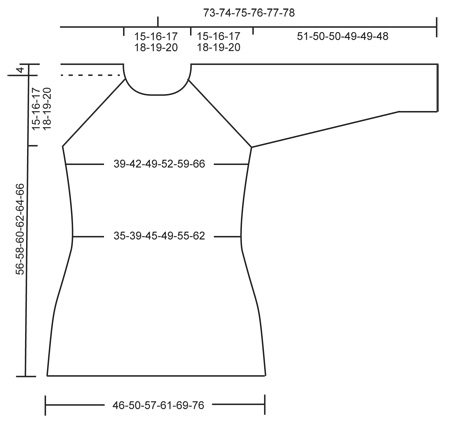
|
|||||||||||||||||||
Have you finished this pattern?Tag your pictures with #dropspattern #greenforestsweater or submit them to the #dropsfan gallery. Do you need help with this pattern?You'll find 26 tutorial videos, a Comments/Questions area and more by visiting the pattern on garnstudio.com. © 1982-2025 DROPS Design A/S. We reserve all rights. This document, including all its sub-sections, has copyrights. Read more about what you can do with our patterns at the bottom of each pattern on our site. |
|||||||||||||||||||








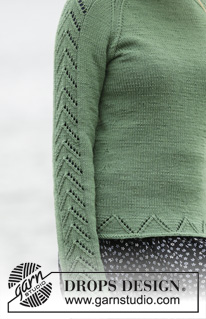




















































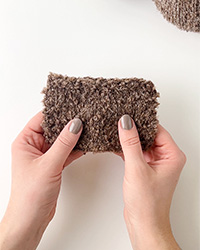
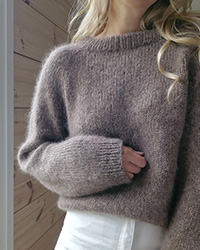
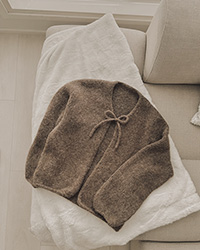
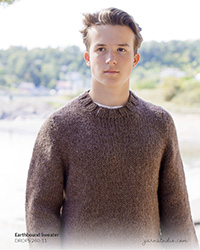
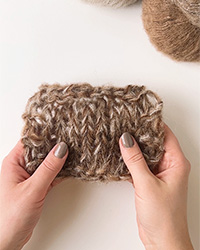
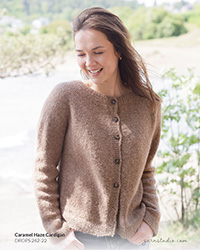
Post a comment to pattern DROPS 164-14
We would love to hear what you have to say about this pattern!
If you want to leave a question, please make sure you select the correct category in the form below, to speed up the answering process. Required fields are marked *.